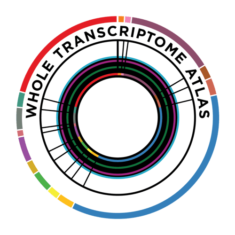GeoMx Digital Spatial Profiler | Nanostring
CITOGEN offers any research centres and/or laboratories that wish to benefit from NanoString technology but lack the equipment to analyse samples the possibility of doing so at our laboratory.
Once the project is known, our experts will help you choose the most suitable panel for your study. Depending on the protocol to be applied, the samples will be processed in the appropriate equipment and the results will be shared for analysis.
The NanoString® GeoMx® platform allows for gene expression digital spatial profiling to be performed.

What can it be used for?
NanoString GeoMx Digital Spatial Profiling (DSP) technology makes it possible to carry out a highly multiplexed gene expression study in selected regions of a tissue slice simultaneously. The morphological context that can be obtained by immunohistochemical techniques is thus combined with the generation of complete transcriptomes and profiles of hundreds of protein analytes.
Researchers will be able to deepen their understanding of tissue heterogeneity, which is essential to answer key biological questions, study cellular interactions, pathogenicity mechanisms and the response to therapies, thus aiding the development of new-generation targeted drugs.

On-Site
Visualisation Technology

+ Spatial –
– Plex +
– Quantification +
– Accuracy +
Molecular
profiling technology

On-Site
Visualisation Technology

Molecular
profiling technology

+ Spatial –
– Plex +
– Quantification +
– Accuracy +
Key Aspects

SAMPLE CHARACTERISATION
Highly multiplexed RNA and protein detection.

DIGITAL QUANTIFICATION
With integrated data standardisation.

COMPLICATED SAMPLES
Protein analysis from FFPE tissue samples or frozen tissues measuring just 5 µm.
MORPHOLOGICAL CONTEXT
Four-colour imaging of the sample to select regions of interest.
How does it work?
NanoString DSP technology combines standard immunofluorescence techniques with optical digital molecular barcode detection to perform gene expression digital spatial profiling.
What is the process?
Query / Advice from our experts
Panel Selection
It is equipped with a variety of panels designed and verified by experts for both RNA and proteins. You can also customise them.
Choice of immunofluorescent markers
Regions of interest can be selected depending on the tissue’s cell types.
Sample submission
Data reception
RNA panels
Oncology
The GeoMx® Cancer Transcriptome Atlas (CTA) has been designed for comprehensive analyses of tumour biology, the microenvironment and the immune response. The panel enables the expression of about 1,800 genes to be analysed, covering around 100 pathways. It allows one to:
- Study the immune response to the tumour
- Analyse the tumour microenvironment
- Quantify tumour reactivity to the immune response and treatments
- Perform profiling of heterogeneous tumours, covering clinically relevant gene sets (Tumour Inflammation Signature, PAM50, etc.)
It can additionally be customised with up to 60 additional targets of interest.

Immunology and Immuno-Oncology
The GeoMx Immune Pathways Panel has been designed to study fundamental aspects of tumour biology, its microenvironment and the immune system’s status. The panel allows 84 RNA targets covering several routes to be analysed. It allows one to:
- Perform profiling of the overall immune response
- Assess the microenvironment’s immunological activity
- Quantify tumour reactivity
- Measure the tumour inflammation signature of 18 genes known to be associated to the response to the blocking of the PD-1 / PD-L1 inhibitor pathway

Neuroscience
The GeoMx Whole Transcriptome Atlas (WTA) is designed for an exhaustive detailed analysis of cell biology, providing full coverage of the coding genes. It allows one to:
- Perform spatial profiling: Possibility of identifying gene expression in specific regions of the tissue with mapping of specific pathways and functions, as well as abundance of cell types.
- Discover biomarkers: Identification of biomarkers associated to a location in the tissue with the potential to identify processes or therapeutic targets not located in other types of assays on the entire tissue.
- Analyse pathways: The annotated content provides spatial mapping of signalling pathway activation within discrete tissue compartments.

Protein panels
Immunology and Immuno-Oncology
The Immune Cell Profiling Core allows 18 key targets in immuno-oncology and immune cell markers (T cells, B cells, macrophages, NK cells, epithelium and stroma) to be analysed with spatial resolution. Up to seven additional modules (each with 10 targets) can be added to the “Core” module, including:
- IO Drug Target Module: Includes drug targets under development in the area of immuno-oncology, including checkpoint molecules and immune function metabolic mediators.
- Immune Activation Status Module: Includes additional checkpoint molecules that modulate T-cell activation.
- Immune Cell Typing Module: Includes an expanded set of cell markers to further profile the immune cell types covered by the Core module, e.g., T-cell subtypes.
- Pan-Tumour Module: Includes an expanded set of markers to detect specific tumour types, including ER + / HER2 + breast tumours, hematopoietic malignancies and melanomas.
- Cell Death Module: Includes immunogenic and programmed cell death mediator proteins.
- PI3K / AKT Signalling Module: Includes key proteins involved in PI3K-AKT signal transduction and phosphorylated protein products that allow pathway activation to be measured.
- MAPK Signalling Module: Includes key proteins involved in MAPK signal transduction and phosphorylated protein products that allow pathway activation to be measured.

Neuroscience
The Neural Cell Profiling Core allows specially resolved analysis of 20 targets designed for assessing the immune cell profiling, to which modules related to neural cell profiling, Alzheimer’s or Parkinson’s disease pathologies, autophagy or glial cell subtyping can be added.

Some Applications
- Know the biology of specific tissue regions like, for example, tumours.
- Determine the abundance of different cell types.
- Discover new biomarkers, for example, to study response to therapies.
- Analyse activated pathways and signalling in specific tissue regions.
- Study cell interactions…



